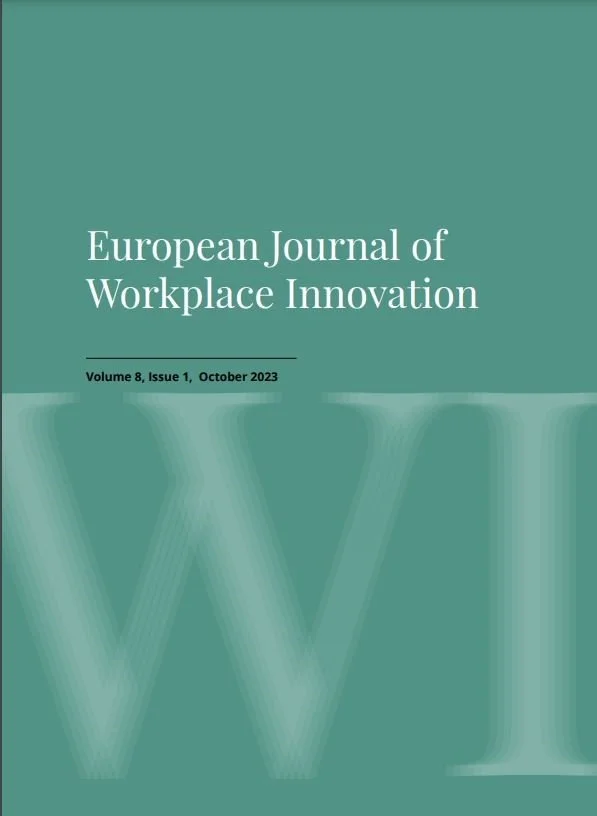Thomas Carey, Anahita Baregheh, Felix Nobis and Mathias Stevenson
In previous posts we summarized our rationale for engaging a diverse set of academic institutions to collaborate on developing capability in Inclusive Workplace Innovation. We also highlighted the international recognition for our initial collaboration via our European award for Innovation and Entrepreneurship Teaching Excellence in September 2022.
This month our scholarly article on that initial collaboration was published in the open-access European Journal of Workplace Innovation (Vol 8, Issue 1). The Editor’s introduction to the Issue highlights how its contents reflect a wider diffusion of Workplace Innovation beyond its European origins:
“Workplace Innovation has been taken up more widely, both in industrialized and developing countries…Thomas Carey, Anahita Baregheh, Felix Nobis and Mathias Stevenson have taken on the important challenge of mainstreaming Workplace Innovation in [both Liberal Arts and] Business Education, with an account of collaboration between Canadian and Australian universities.”
We are also pleased to note that this is the first time the European Journal of Workplace Innovation has featured a teaching and learning initiative in post-secondary education. We intentionally chose this journal – rather than one specifically targeting postsecondary instructors – to reflect our WINCan commitment to serve as a bridge between workplace and academic partners engaged in the joint task of advancing capability for workplace innovation.
You can download the full article as a PDF. Here is the Abstract:
Recent developments in tertiary education are demonstrating teaching and learning methods to develop students’ capability for employee-led Workplace Innovation. In this article, we describe an international collaboration to develop shared learning resources and activities in workplace innovation for adaptation in diverse tertiary education contexts. We are intentionally seeking out additional collaborating institutions that differ in mission, size, location and student demographics, to leverage our team’s diversity and encourage innovation.
When shared learning resources and activities are to be used in diverse contexts, some core principles underlying instructional success must also be shared in order to ensure adaptations do not remove key properties. We outline four instructional principles underlying the learning design and illustrate how these principles are applied in our current learning resources.
We then describe some of the ways that these shared resources have been adapted for different tertiary education environments. We also discuss some of the benefits emerging from the collaboration, including how the inclusion of new resources targeting specific work domains and the transfer of new teaching and learning ideas across contexts.
We conclude by describing some of the ways we are also collaborating with workplace partners, to ensure that our graduates have the capabilities needed to contribute to workplace innovation practice and to help advance the workplace innovation capability of their own employees.
About the authors:
Thomas Carey is the Principal Catalyst for Academic Partnerships with the Workplace Innovation Network for Canada and an academic leader who has directed numerous multi-institution innovation projects across academic and workplace sectors in Canada and the U.S.
Anahita Baregheh is WINCan’s Research Director, an Associate Professor in Nipissing University’s School of Business and a former consultant on innovation with SMEs in the U.K.
Felix Nobis is Senior Lecturer in Critical Theatre Performance at Monash University (our WINCan partner in Melbourne Australia), Work-Integrated Learning coordinator for the Faculty of Arts and project leader for course units in Workplace Innovation.
Mathias Stevenson is a Lecturer in the School of Languages, Literature, Cultures and Linguistics at Monash University and co-author of the book Reggae and Hip Hop in Southern Italy: Politics, Languages, and Multiple Marginalities.

